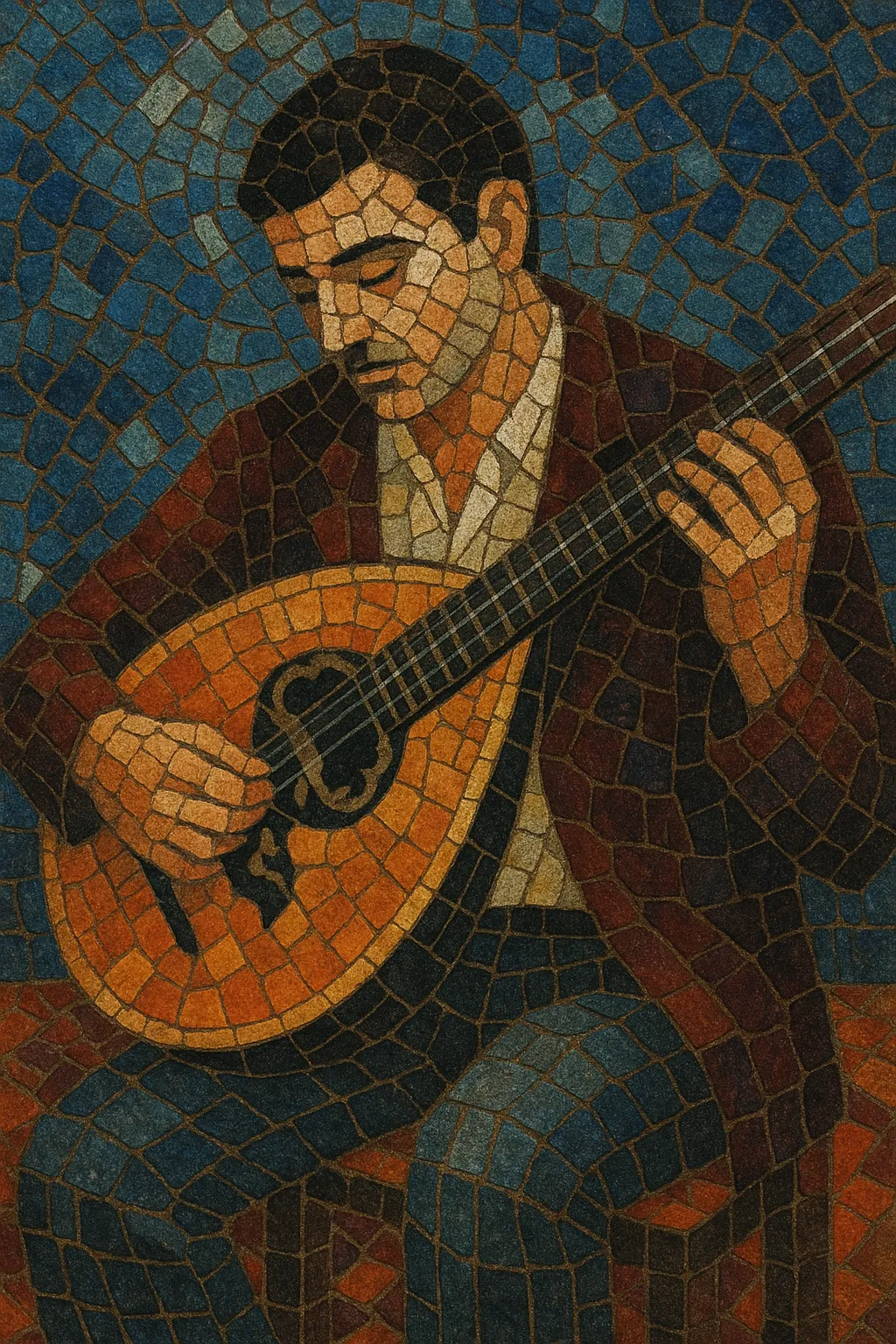Laïko (laïkó tragoudi) is modern Greek popular music that crystallized in the post–World War II era as rebetiko’s urban sound moved into the mainstream.
It blends the expressive bouzouki-led melodies and modal color of earlier Greek urban and folk traditions with verse–chorus songcraft and production values suited to radio, records, and the nightclub culture of the “bouzoukia.”
Typical laïko ranges from intensely emotive laments about love, exile, and hardship to celebratory dance numbers, all delivered with ornamented vocals, dramatic vibrato, and prominent instrumental intros (often a taximi improvisation on bouzouki).
After the war and civil turmoil, Greece saw rapid urbanization and a loosening of earlier censorship on rebetiko. Songwriters and performers brought rebetiko’s bouzouki and baglamas into more accessible forms, smoothing rougher lyrical themes and adopting clearer verse–chorus structures. This shift produced laïko—still deeply Greek in melody and modality, but tailored for a wider public.
The 1950s and 1960s are often regarded as laïko’s classic period. Composers and singers such as Vasilis Tsitsanis, Stelios Kazantzidis, Grigoris Bithikotsis, and Marinella popularized heartfelt songs featuring bouzouki-led taximia, zeibekiko (9/8) and hasapiko (duple) rhythms, and stories of love, loss, migration, and working-class life. Record labels, radio, and the rise of nightclubs (“bouzoukia”) cemented laïko as Greece’s dominant popular music.
In the 1970s, laïko intersected with éntekhno (art song), which fused laïko/rebetiko idioms with orchestral and poetic ambitions. Artists navigated between popular appeal and higher-art aspirations, expanding harmonic palettes while retaining Greek rhythmic foundations such as zeibekiko and tsifteteli.
Synthesizers, drum machines, and glossy production ushered in “modern laïko,” while club-oriented offshoots such as “skyladiko” emphasized dancefloor energy. Despite these changes, core laïko hallmarks—ornamented vocals, bouzouki motifs, and modal inflections—remained intact, now presented alongside pop hooks and contemporary studio techniques.
Contemporary laïko continues to thrive in Greek nightlife and media, often blending with pop and electronic textures. Its durability rests on a balance of tradition (bouzouki, Greek rhythms, emotive storytelling) and adaptability to current production and performance styles.


